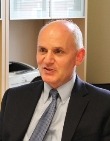Exercise as a Treatment for ADHD
 Although I no longer maintain a clinical practice, for years I worked with children with ADHD and their families. One thing I heard from many parents was that their child responded well to physical exercise, that it helped their children burn off excess energy and maintain a calmer and more focused state.
Although I no longer maintain a clinical practice, for years I worked with children with ADHD and their families. One thing I heard from many parents was that their child responded well to physical exercise, that it helped their children burn off excess energy and maintain a calmer and more focused state.
Indeed, evidence from several large-scale experimental studies suggests that physical activity training can have a positive influence on children’s cognitive functioning. Systematic research on the impact of physical activity on youth with ADHD is relatively lacking, however, despite the positive anecdotal reports that one frequently hears from parents. A study published recently online in the Journal of Attention Disorders begins to remedy this situation by examining the effects of an extended physical activity training program on children with ADHD.
Participants were 21 children (19 boys) ranging in age from 7 to 12 years. All children were diagnosed with either the combined or hyperactive-impulsive subtype of ADHD. (Children with the inattentive subtype were excluded because the authors anticipated greater benefits of exercise in youth for whom hyperactivity was an important part of their
symptom picture.) Children were assigned to either the physical activity program group or a control group; these assignments were not done randomly, however. Instead, because of recruitment difficulties, participants in the activity group were all from the same school while children in the control group were recruited from different areas. As the authors acknowledge, the absence of random assignment is an important limitation of the study.
Children in the exercise group completed a 45-minute exercise routine 3 times per week during the school day over a 10-week period. All sessions were supervised by a physical education teacher and included a combination of aerobic activity, strength training, and motor skills training. The objective was to maintain moderate to vigorous intensity in
each session; this was monitored using a heart rate monitor.
Measures
A variety of measures were collected on the activity and control group before and after the 10-week exercise program. The different domains measured were:
- Fitness and motor performance — Measures of motor abilities and muscular strength
- Behavioral measures — Children’s behavior was assessed via the Child Behavior Checklist and the Teacher Report Form. These are widely-used, standardized behavior measures that assess children in multiple domains, including behaviors directly related to ADHD.
- Neuropsychological measures — Children’s attention and response inhibition, i.e., the ability to refrain from impulsive responding, were measured using the Test of Everyday Attention for Children.
Results
- Impact on Fitness
Not surprisingly, children in the exercise group showed significant gains relative to controls on measures of motor skills and muscular strength.
Behavior
- Behavioral Ratings
Parent ratings on the Child Behavior Checklist showed significant reductions for children in the exercise group on 3 of the CBCL subscales: Total Problems, Thought Problems, and Attention Problems.
It is important to note, however, that even though the exercise group had lower scores on these scales at the end of the program, after controlling for their baseline scores, average scores remained in a clinically elevated range.
For teacher ratings, a tendency for improvement in the exercise group was reported on all scales. This included statistically significant reductions in problem scores on the Anxiety-Depression scale and the Social Problems scale.
- Neuropsychological Functioning
Some improvements were also evident on neuropsychological functioning as measured by the Test of Everyday
Attention for Children. Results on this measure were consistent with children in the exercise group showing better auditory sustained attention.
Summary and Implications
Results from this study provide initial evidence that a systematic and rigorous physical activity program may be beneficial to youth with ADHD. As discussed above, youth who participated in the exercise group showed
significant improvements relative to controls in a number of areas, based on reports from parents and teachers as well as on a measure of neuropsychological functioning.
Although these findings suggest that exercise may be helpful in addressing some symptoms of ADHD, as well as difficulties that often accompany ADHD, it is important to put these positive findings into an appropriate perspective. First, even though the activity program was associated with improvements in several areas, children continued to show clinically elevated difficulties even in areas where improvements were seen. Thus, there was no evidence that the exercise program reduced children’s difficulties into the normative range.
Second, as the authors note, the absence of random assignment limits the conclusions that can be drawn from this study. The authors also suggest caution because parents and teachers were not blind to children’s status, and expectations of positive results from the exercise program may have biased their ratings.
These issues all need to be addressed in a follow-up study that includes a larger sample, random assignment, and, ideally, ratings from observers who do not know which children received the program and which did not. In
the meantime, a vigorous physical activity program could certainly be valuable for many children with ADHD for a variety of reasons, even if the ultimate impact of exercise on core ADHD symptoms is not yet known.
Reference: Verret, et.al., A physical activity program improves behavior and cognitive functions in children with ADHD: An exploratory study. (2010). Journal of Attention Disorders. published on September 13, 2010 as doi 10:1177/1087054710379735
Read more posts by Dr. Rabiner on other factors impacting ADHD:
 – Dr. David Rabiner is a child clinical psychologist and Director of Undergraduate Studies in the Department of Psychology and Neuroscience at Duke University. He publishes Attention Research Update, an online newsletter that helps parents, professionals, and educators keep up with the latest research on ADHD, and teaches the online course How to Navigate Conventional and Complementary ADHD Treatments for Healthy Brain Development.
– Dr. David Rabiner is a child clinical psychologist and Director of Undergraduate Studies in the Department of Psychology and Neuroscience at Duke University. He publishes Attention Research Update, an online newsletter that helps parents, professionals, and educators keep up with the latest research on ADHD, and teaches the online course How to Navigate Conventional and Complementary ADHD Treatments for Healthy Brain Development.



We have forgotten, as a society, that attention is a learned skill. It does not come naturally to all children. Because of our genetic endowment, the ability to attend varies with each individual; some individuals have greater capacity than others, but everyone can learn to improve attention. Everyone.
If attention difficulties vastly affect one’s life, perhaps it should be labeled a disorder, but that would mean that very few people would be diagnosed. That of course would prevent the pharmaceutical companies from selling vast amounts of ADHD medication — more in the US than any other nation on the planet.
As a former elementary school principal, I am quite aware that attention difficulties are just the tip of the iceberg. ADHD children can’t filter out distractions, finish tasks on-time, use their memory optimally, etc. A pill doesn’t teach these skills, but as an educator, I can.
I found and used Play Attention (www.playattention.com) and ADHD Nanny (www.adhdnanny.com). We’ve been very successful with these approaches. Happy parents, better grades, and better students.
It’s just important to know that medicine teaches nothing. Parents and teachers must actively participate to help change a child’s life.
Thanks for exercise to get preoccupied. It gives ADHD diagnosed to keep on focus.On the other side, exercise promotes your brain to release several important chemicals such as endorphins that regulate mood and in a way affects focus and attention span. Exercise group is indeed beneficial.